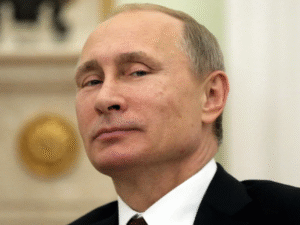$GLD $BTC $XAUUSD
#Gold #Bitcoin #SafeHaven #TradeWar #Investing #Cryptocurrency #TariffChaos #FinancialMarkets #EconomicUncertainty #Trump2025 #InstitutionalInvestors #MarketVolatility
In a world brimming with uncertainty, particularly with the resurgence of trade tensions in 2025 under the Trump administration, the age-old debate of the best safe haven asset has once again taken center stage. Amidst the looming tariff chaos, a significant shift in the preferences of institutional investors has been observed, with a strong pivot towards gold over Bitcoin. This movement underscores a deeper search for stability and crisis-time reliability in investments, qualities that gold has historically exemplified across centuries of economic upheavals and geopolitical tensions. While Bitcoin has often been lauded as the ‘digital gold’, the current climate of trade war turmoil has cast a shadow on its efficacy as a safe haven asset, prompting investors to gravitate back towards traditional gold.
The rationale behind this marked preference for gold over Bitcoin or other cryptocurrencies lies in its inherent attributes. Gold’s tangible nature, finite supply, and its non-correlation with the stock market render it a stabilizing force in investment portfolios, especially in times of economic distress. Conversely, Bitcoin, despite its potential for high returns, carries a volatility that can be unsettling for investors seeking shelter during stormy economic times. The digital currency’s price swings, exacerbated by regulatory uncertainties and shifting market sentiments, present a stark contrast to gold’s steadiness. Moreover, gold’s universal acceptance as a store of value and medium of exchange further cements its status as a superior safe haven during trade war-induced market volatilities.
Additionally, the financial infrastructure surrounding gold investment is both mature and robust, offering a multitude of vehicles for exposure ranging from physical gold to exchange-traded funds (ETFs) like GLD, and mining stocks. This accessibility ensures that investors can easily incorporate gold into their portfolios, leveraging its defensive capabilities. In contrast, Bitcoin’s relatively nascent and oftentimes complex investment ecosystem can pose challenges for institutional investors, particularly those with stringent regulatory compliance and liquidity requirements. The perception of gold as a ‘safe’ asset is thereby not only a testament to its historical performance but also its integration into traditional financial systems, which Bitcoin still struggles to achieve.
However, it’s crucial to acknowledge the evolving landscape of investment assets. Bitcoin and the broader cryptocurrency market are undeniably carving out their own niche, buoyed by technological advancements and increasing mainstream acceptance. Yet, in the heat of Trump’s 2025 tariff chaos, the flight to safety has underscored a traditionalist approach, with gold shining through as the quintessential shelter in the storm. As we navigate through these tumultuous economic times, the choice between gold and Bitcoin is more than a simple asset selection—it’s a reflection of investors’ sentiments towards risk, stability, and the future of financial markets. In this regard, while Bitcoin holds promise and potential, gold remains the stalwart protector in the face of economic uncertainty and geopolitical strife.







Comments are closed.